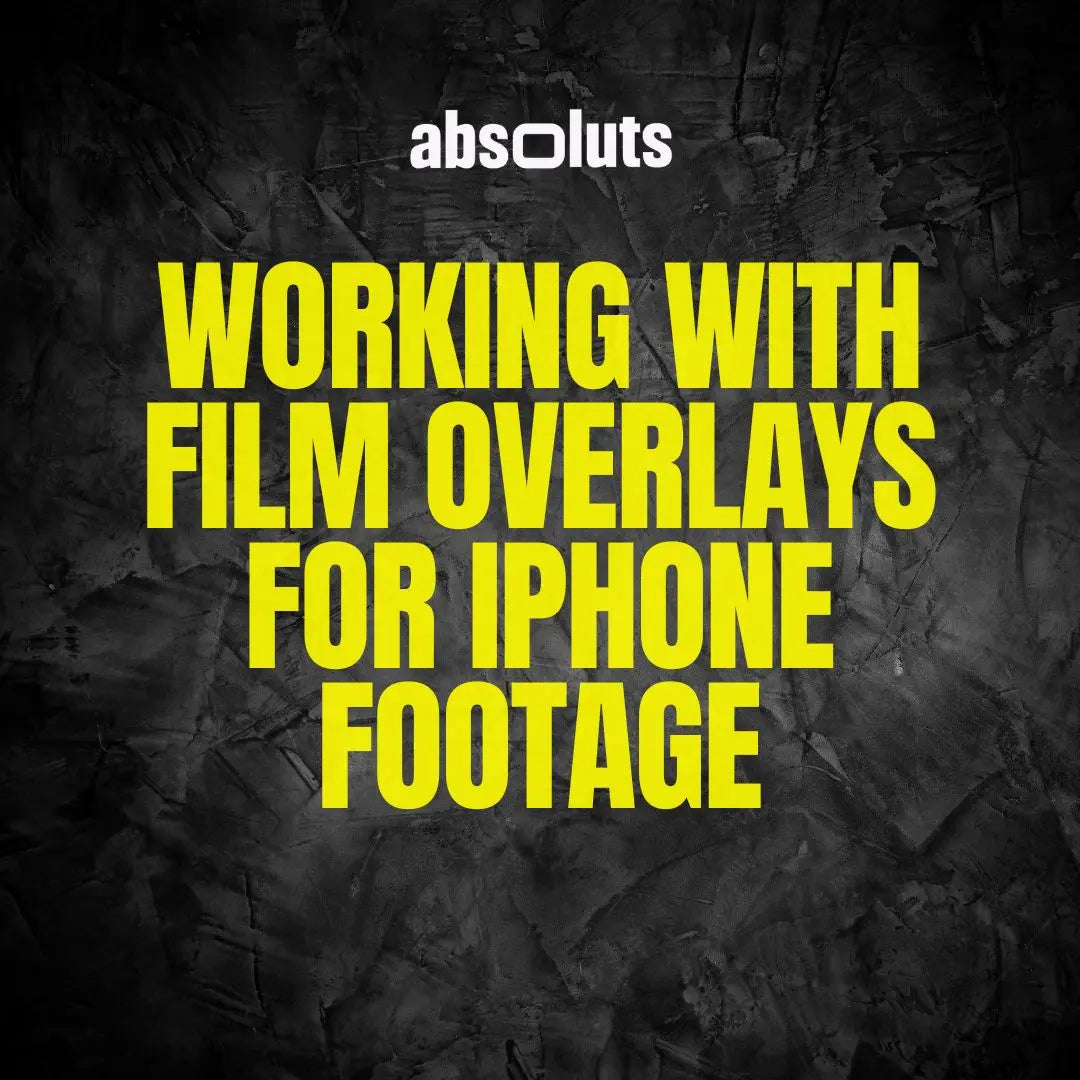
Working with Film Overlays for iPhone Footage
Film overlays are one of the simplest yet most powerful ways to give your iPhone footage that authentic cinematic texture. Whether you’re editing on mobile or desktop, adding film grain, burns, light leaks, or dust overlays can instantly make your digital footage feel handcrafted and alive.
Let’s explore how to use film overlays effectively, no matter which editing software you prefer.
1. What Are Film Overlays?
Film overlays are high-quality video textures, scanned from real film or digitally simulated, that you layer over your footage using blending modes.
They can add:
- Film grain: organic texture and motion in the image.
- Film burns: warm light leaks from vintage film rolls.
- Dust & scratches: imperfections that add a nostalgic, analog feeling.
- Light textures: dreamy transitions or flare glows.
👉 Absoluts offers handcrafted overlay packs designed specifically for modern creators:
- Film Grain Pro Overlays
- Film Burns Pro Overlays
- Filmode Kit – a complete set including grain, burns, and transitions.
2. How to Apply Overlays in Any Editing App
Whether you’re editing in CapCut, LumaFusion, DaVinci Resolve, Final Cut Pro, or Premiere Pro, the workflow is nearly identical:
- Import your overlay clip above your footage in the timeline.
- Change the overlay’s blend mode to “Screen” or “add”.
- Adjust the opacity until it feels natural.
- If the overlay is too strong, add a slight blur or fade animation at the beginning and end.
Tip: Keep overlays subtle. The goal is texture and atmosphere, not distraction.

3. Layering for Depth
The most cinematic results often come from combining multiple overlay types:
- Add film grain first for a tactile base.
- Blend dust particles for vintage charm.
- Finish with a light leak or burn for warmth and movement.

4. Matching the Mood of Your Edit
Each overlay style creates a different emotional response:
- Subtle grain: grounded realism, filmic softness.
- Burns & leaks: warmth, nostalgia, memory-like tones.
- Dust & scratches: imperfection, vintage character.
Experiment to find what complements your story: overlays should enhance, not dictate, your aesthetic.
5. Export Tips for Preserving Texture
When exporting, make sure your settings maintain the detail of your overlays:
- Resolution: Match your project (4K recommended).
- Codec: ProRes or high-bitrate H.264.
- Color Space: Rec.709 (for most platforms).
- Bitrate: 30–50 Mbps minimum to avoid compression artifacts.
Avoid over-compressing, you’ll lose the fine texture of the film grain.
Final Thoughts
Film overlays are more than decoration, they’re storytelling tools that bridge the gap between digital precision and analog emotion. Whether you’re editing a cinematic short or a social clip, overlays can give your iPhone footage a unique, tactile identity that stands out from generic digital looks.
👉 Explore Absoluts’ collection of handcrafted overlays:
- Film Grain Pro Overlays
- Film Burns Pro Overlays
- Filmode Kit — the all-in-one overlay pack for iPhone filmmakers.
